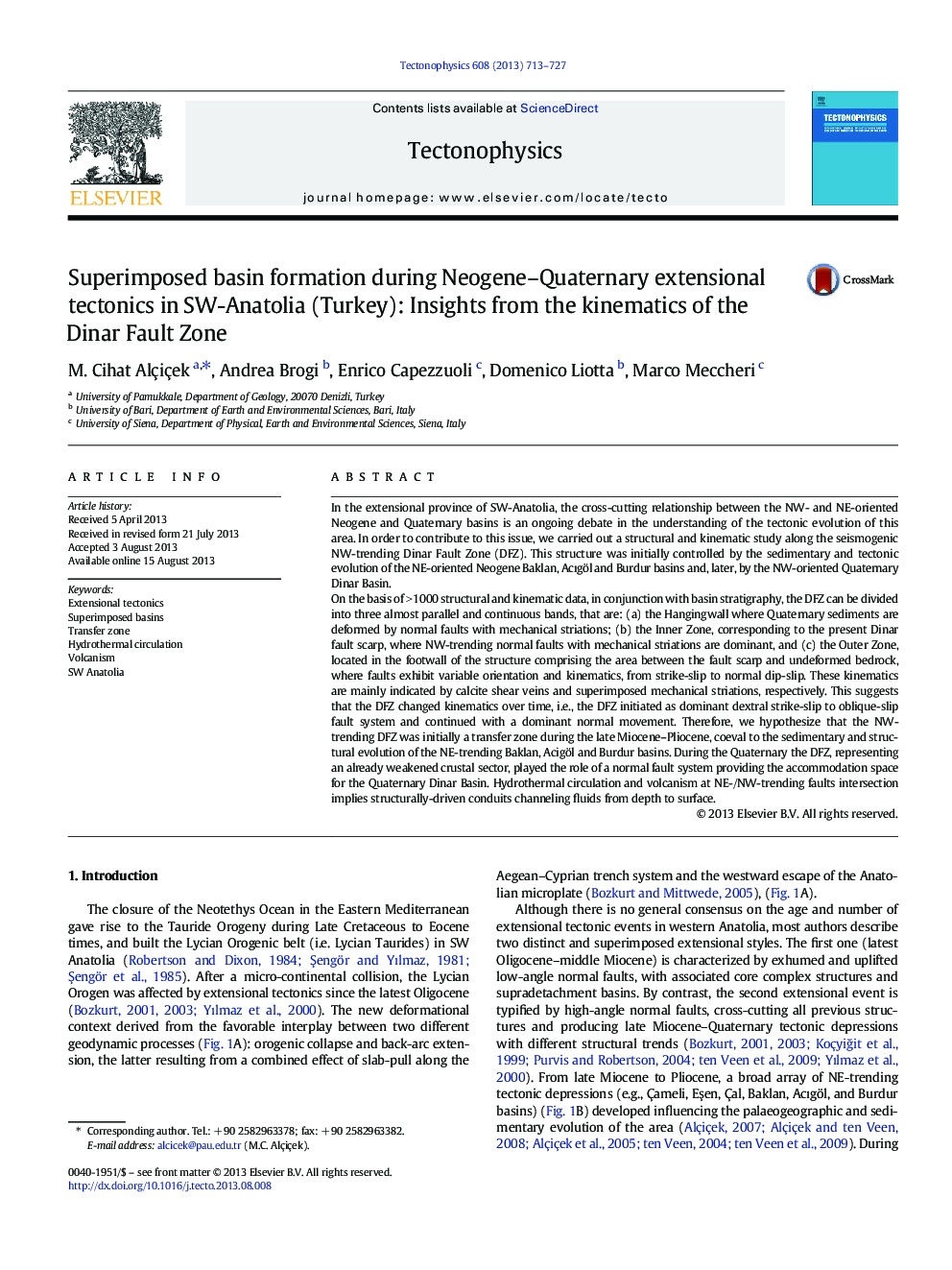| کد مقاله | کد نشریه | سال انتشار | مقاله انگلیسی | نسخه تمام متن |
|---|---|---|---|---|
| 6433997 | 1636779 | 2013 | 15 صفحه PDF | دانلود رایگان |
- The seismogenic DFZ has controlled the formation of superimposed basins in W Turkey.
- DFZ was initially strike/oblique-slip transfer fault accompanying NE-trending basins.
- Later reactivated as normal fault providing accommodation for NW-trending basin.
- DFZ channeled fluids and magmas for hydrothermal circulation and volcanic eruptions.
- DFZ accommodates extensional orogenic collapse and back-ark extensions respectively.
In the extensional province of SW-Anatolia, the cross-cutting relationship between the NW- and NE-oriented Neogene and Quaternary basins is an ongoing debate in the understanding of the tectonic evolution of this area. In order to contribute to this issue, we carried out a structural and kinematic study along the seismogenic NW-trending Dinar Fault Zone (DFZ). This structure was initially controlled by the sedimentary and tectonic evolution of the NE-oriented Neogene Baklan, Acıgöl and Burdur basins and, later, by the NW-oriented Quaternary Dinar Basin.On the basis of > 1000 structural and kinematic data, in conjunction with basin stratigraphy, the DFZ can be divided into three almost parallel and continuous bands, that are: (a) the Hangingwall where Quaternary sediments are deformed by normal faults with mechanical striations; (b) the Inner Zone, corresponding to the present Dinar fault scarp, where NW-trending normal faults with mechanical striations are dominant, and (c) the Outer Zone, located in the footwall of the structure comprising the area between the fault scarp and undeformed bedrock, where faults exhibit variable orientation and kinematics, from strike-slip to normal dip-slip. These kinematics are mainly indicated by calcite shear veins and superimposed mechanical striations, respectively. This suggests that the DFZ changed kinematics over time, i.e., the DFZ initiated as dominant dextral strike-slip to oblique-slip fault system and continued with a dominant normal movement. Therefore, we hypothesize that the NW-trending DFZ was initially a transfer zone during the late Miocene-Pliocene, coeval to the sedimentary and structural evolution of the NE-trending Baklan, Acigöl and Burdur basins. During the Quaternary the DFZ, representing an already weakened crustal sector, played the role of a normal fault system providing the accommodation space for the Quaternary Dinar Basin. Hydrothermal circulation and volcanism at NE-/NW-trending faults intersection implies structurally-driven conduits channeling fluids from depth to surface.
Journal: Tectonophysics - Volume 608, 26 November 2013, Pages 713-727
